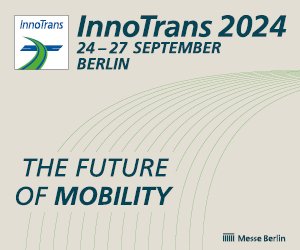The futurist and majestic view of the high-speed (bullet) train has obfuscated a movement which, in a very silent way, has been strengthening throughout the country. After its abandonment for more than 40 years, passenger transportation on rails is returning to the stage, especially driven by the projects for the World Soccer Cup 2014 and Olympic Games 2016, in Rio de Janeiro.
Surveys carried out by Valor Econômico on the initiatives under study phase or with execution in progress in the country related to this transportation mode, including metro tracks, regional and interstate trains, and also including monorails and light rail vehicles (LRV), which are the current modern trams very used in many European cities, show that this industry shall make business transactions amounting to US$ 51 billion in the next five years. The data was achieved with governmental bodies, regulation agencies and industry associations.
In the last week, the Ministry of Transports got together in Brasília a group of entrepreneurs and representatives of the industry to discuss this subject. The Government already has a list of priority works, making provision for the creation of 14 regional trains (traffic within a single State), spread throughout the country. And these are not trains for tourism purposes. They shall run on regular paths with daily departures. This list resulted from a fine screening made by BNDES (National Bank for Economic and Social Development) in 64 potential railroad stretches and is formed by the reactivation of railroad stretches not granted for exploration by the private initiative during the 1990s and that are currently abandoned.
The projects include railroad tracks, such as Campinas to Araraquara (São Paulo); Pelotas to Rio Grande (Rio Grande do Sul); Recife to Caruaru (Pernambuco); and Santa Cruz to Mangaratiba (Rio Janeiro). These tracks together provide total extension of 1,300 km of rails, which is a significant figure. Today, if a user intends to reach his destination running on regular railroads, he will rely on restricted 930 km of tracks, which include all the metro tracks and regional trains operating in the country. The railroad stretches from Bento Gonçalves to Caxias do Sul (RS) and from Londrina to Maringá (PR) are already in advanced phase of economic feasibility studies, says Vicente Abate, CEO at ABIFER (Brazilian Association of the Railroad Industry).
The expectation is that more projects shall be made feasible still this year. In addition to regional passenger trains, there is a list being prepared for 15 additional LRV projects. LRV is an equipment with metro features, but running at medium speeds and with reduced capacity. While a metro track typically carries 60,000 passengers per hour/direction, the LRV, usually formed by two coaches, carries approximately 30,000 passengers within the same period.
Today, the only LRV operating in the country runs on the rails of Cariri, a city close to Fortaleza. However, the orders for these ‘trams’ already placed throughout the country already reach 140 coaches, at a total cost near US$ 300 million. There are orders placed for Recife, Maceió, Sobral, Macaé, Arapiraca and Brasília.
For shorter runs, the States and cities have placed bets on monorails. According to data provided by Abifer, there are currently 378 coaches already ordered for these projects, which shall make business transactions amounting to US$ 864 million only in terms of pieces of equipment.
Near 7.7 million passengers currently use railroad transportation in the country. The capital of São Paulo is, far away, the largest market, which capacity limit was exceeded a long time ago, as publicly known. By adding the railroad stretches of Companhia Paulista de Trens Metropolitanos (CPTM) and Metro, six million passengers run across São Paulo each day. This is one of the densest Metro facilities in the world. For comparison purposes only, we may highlight that the 70-km facilities currently in operation in the Metro São Paulo carry 3.7 million passengers each day, while the London “Tube”, with 413 km of rails, carries 3.5 million passengers per day.
Railroads are used in Rio de Janeiro by approximately 1.2 million passengers each day. Near 130,000 passengers are carried in Brasília and 370,000 people travel in other cities of the country.
As key drivers of the new projects, World Soccer Cup and Olympic Games have already included in the agenda of the State Government of Paraná the construction of a Metro track in Curitiba. The Government of São Paulo set a goal to jump from the current 230-km railroad facilities (including 160 km of CPTM) to 420 km by 2014.
The Federal Government Budget for the second phase of PAC 2 (Growth Acceleration Program 2) includes provisions of US$ 5.4 billion for initiatives related to the passenger transportation industry. The resumption of investments in this industry already resulted in the creation of a new association. The so called ANPTrilhos (National Association of Passenger Rail Carriers has been newly created in Brasília. Rodrigo Vilaça, current Executive Chairman at ANTF (National Association of Rail Carriers) will also occupy the function of Finance Director of the new institution. Vilaça explains that the role of the new association is informing the Federal and State governments on the need for providing additional room for private initiatives in this market segment. “We intend to develop our actions with CBTU (Brazilian Urban Train Company) and state Metro companies so as to divide operations by concessions,” he comments. “This is the best option for quickly disseminating the access to this transportation mode to people.”


Seja o primeiro a comentar